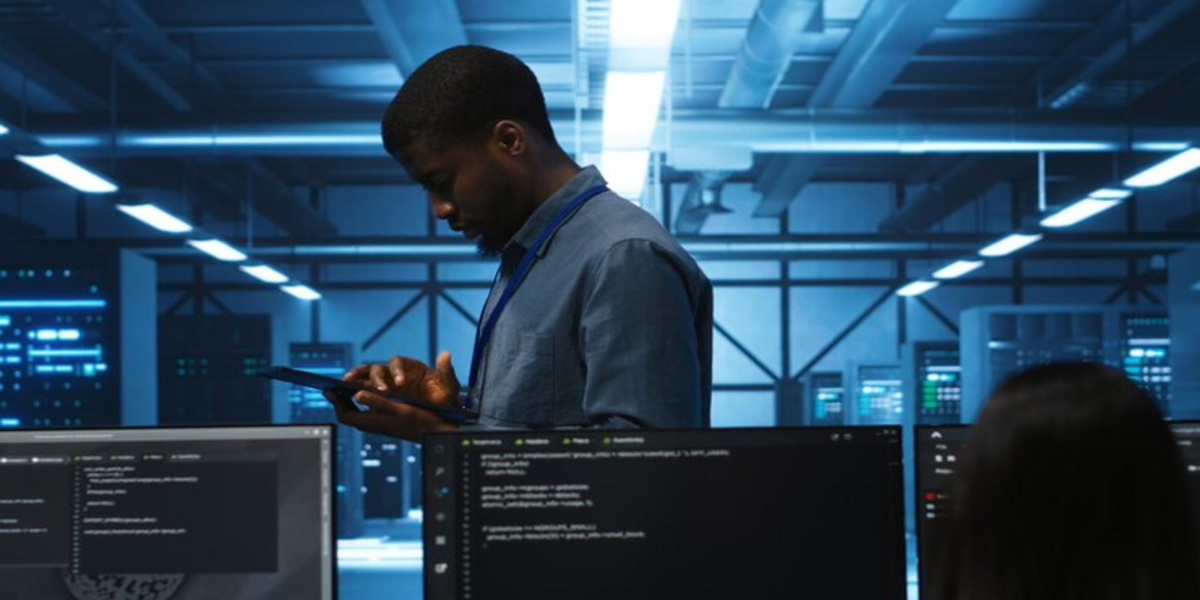As the world takes on the new normal, employees have already shifted or are in the process of moving to an entirely remote work environment across different industries. Companies have been forced to adapt their information security approach to reflect the change in structure and keep their employees, company technology, and information safe.
Chief Information Security Officers (CISOs) at companies are changing their priority around integrating corporate systems into user systems. They need to introduce new technology to retain productivity while improving cybersecurity measures.
Moving the workforce out of the office exposes the company’s sensitive data to increased cybersecurity risks. Employees might be working on ways to boost their intra-company communications without realizing the massive threat of cyberattacks.
CISOs will play a critical role in protecting their company and employees from new threats in this changing and dynamic remote working environment.
We have created this guide for CISOs using our experience of working with customers who quickly adapted to the new work environment.
Effective Measures to Improve Security in Corporate Communications
There are a few short- and long-term measures you need to take to ensure your company’s best protection. Here are some of the most critical practices you should consider adopting to improve your company’s cybersecurity keeping the threats of the new work environment in mind.
1. Consolidate Communication Channels
One of the biggest risks for sensitive company data is the workforce communicating with each other using unsecured channels. Introducing and enabling official and secure chat tools can help employees understand where their corporate communication should occur.
It is easier to secure vital corporate data by unifying the communication channel. As CISO, you can take top-notch measures to improve cybersecurity measures to protect a consolidated communications source. It is much safer than trying to enhance security across different measures.
There are various premium cloud-based business communication tools that come with default security measures. You can further enhance security measures to protect user data and organizational information through multiple tools to secure access, eliminating phishing emails, and minimizing other cybersecurity threats.
2. Introducing and Standardizing New Technology
As your workforce adapts to working from home, there is an increased need to procure new tools and technology that can substitute for the lack of in-person interaction to continue effective collaboration.
Failing to provide employees with adequate tools to complete their work can increase the chances of them resorting to ineffective or un-vetted tools and applications. As CISO, it is crucial for you to understand what tools are necessary for your workforce to work effectively. Taking proactive measures to identify and address the need to integrate new tools and technology will be mission-critical.
The shift to the remote work environment was quick, and it might be challenging to identify the ideal solutions. You should emphasize the need for open communication with your workforce to recognize problems so you can find viable solutions. It will keep them from looking for solutions on their own.
3. Integrating Corporate Systems and User Data
The most significant challenge you will face as CISO of a remote workforce is improper security and privacy measures for networks your employees use at home. For instance, clinical workers providing their clients with virtual appointments need to maintain high data privacy standards to protect sensitive patient information.
Many home-based technologies have built-in microphones and listening capabilities that can create privacy risks if they are connected to an unsecured network. Introducing Virtual Private Networks (VPNs) can allow your company to provide your workforce with secure access to company networks. It can also allow your IT team to access employee devices to provide security updates to your workforce as needed.
4. Educating The Workforce
Most employees have work laptops that they use at home. Still, organizations will likely see an increasing use of personal devices to access company data. It is critical to educate your employees on the need to access the company network only using secure channels even when they are using their personal devices.
Multi-factor authentication for all employees and in every instance of accessing company networks will also decrease the chances of unwanted personnel accessing company data. You can provide regular workshops to your workforce and implement changes to improve how they secure the devices they use to access company networks.
Establishing a transparent and open communication policy will help your workforce understand the cybersecurity risks and the possible consequences of being complacent. Providing them with clear and necessary information about protecting their devices can go a very long way in helping your employees and the organization stays ahead of cybersecurity threats.
Helping your employees understand the importance of conditional access to data, the need to communicate with colleagues through official channels, and the consequences of a lack of anti-malware protection are some of the ways you can retain remote working productivity while improving security.
The Role of CISOs Moving Forward
The technology and tools necessary to implement safe and secure remote working environments have been available for a long time. Companies have been adopting these to mobilize their workforce while ensuring top-notch security.
The pandemic has forced organizations to adopt the remote working environment, even if they did not have plans to implement the change. Many organizations are struggling to cope with the change, and CISOs are going to continue facing challenges as they navigate the new normal for their organization.
CISOs will need to become more vigilant to the new threats to their organization with the changing work environment. You will need to take more measures to educate your workforce regarding information security and provide them with the necessary tools to ensure productivity without compromising cybersecurity.
Working from home does not mean that your employees need to be isolated. Reassure your workforce that they can be social, remain in touch with their colleagues, and ensure security for the organization.
Devise comprehensive strategies to improve company communications and cybersecurity. Working with an MSP like Microsys for their business management solutions can help you incorporate the necessary changes to help you keep your business safe and secure moving forward. We hope this guide provides you with an ideal departure point on adapting to the new normal for your organization’s operations.



